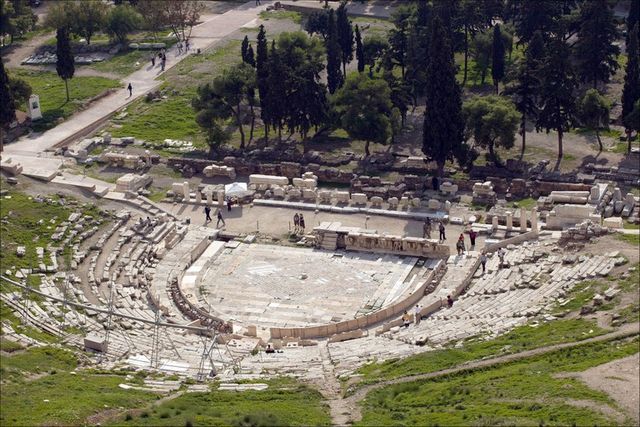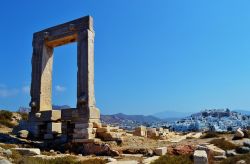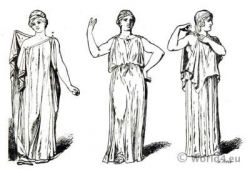-
News
Sights of Interest in Greece
-

Theatre of Dionysus in Athens
14-05-2013 15:53The Theatre of Dionysus is a major open-air theatre used for festivals in honor of the god Dionysus. It is located in the eastern part of the south side of the Acropolis Hill in Athens and north of the Temple of Dionysus, the part of the Acropolis Hill that can be seen right across of the New Acropolis Museum.
The Temple of Dionysos on the south slope of the Acropolis worshiped the god Dionysus as Eleuthereus because his worship was introduced into Athens from the city of Eleutheres in Boeotia by Pisistratus and his sons, in the second half of the 6th century B.C. The oldest part of the Theatre of Dionysus dates back at the same time, but the majority of the structure was built by the Archon of Athens Lycurgus in the second half of the 4th century B.C.
During Lykurgus times, the theatre was constructed entirely by stone and was extended to the Sacred Hill of Acropolis, incorporating part of the perimeter road of the Acropolis, passing over the original auditorium and turning it into a frieze. It is estimated that in this period the theater could seat about 15000-16000 viewers. In the first row of seats, the so-called presidential seats, there were 67 marble thrones, each of whom was engraved with the name of the person intended to be used by. The throne of the priest of Dionysus Elefthereos was in the middle of the series.
The scene was the most likely a rectangular structure spanning the full range of the orchestra, with two prominent places at the ends, the "backstage". During this period became more distinct the boundaries between the theater and the sanctuary of Dionysus by building a fence that encircled the temple. During the Hellenistic period, important changes were made only on the stage of the theater and during Roman times the theatre took a monumental form.
In 86 BC, during the invasion of Sulla, the entire theater suffered significant damage but under the Emperor Nero a new scene of impressive dimensions was built. The orchestra due to the expansion of the stage was transformed into a semicircle paved with marble. After the invasion of the Heruli in 267 AD, the theater was mainly used for meetings of the citizens to discuss politics.
In this theatre the Great Dionysia Festival was celebrated every year during the month Elaphebolion in late March to early April, the greatest and most important celebration in honor of the god. During this kind of festivals, by the circular dancing and singing in honor of the god, the tragedy was born. From then on, Dionysus would never be just the god of wine and fun, but the god protector of one of the nobler kinds of art that people created, theatre.
-
Top bews!
-
Relative articles
















